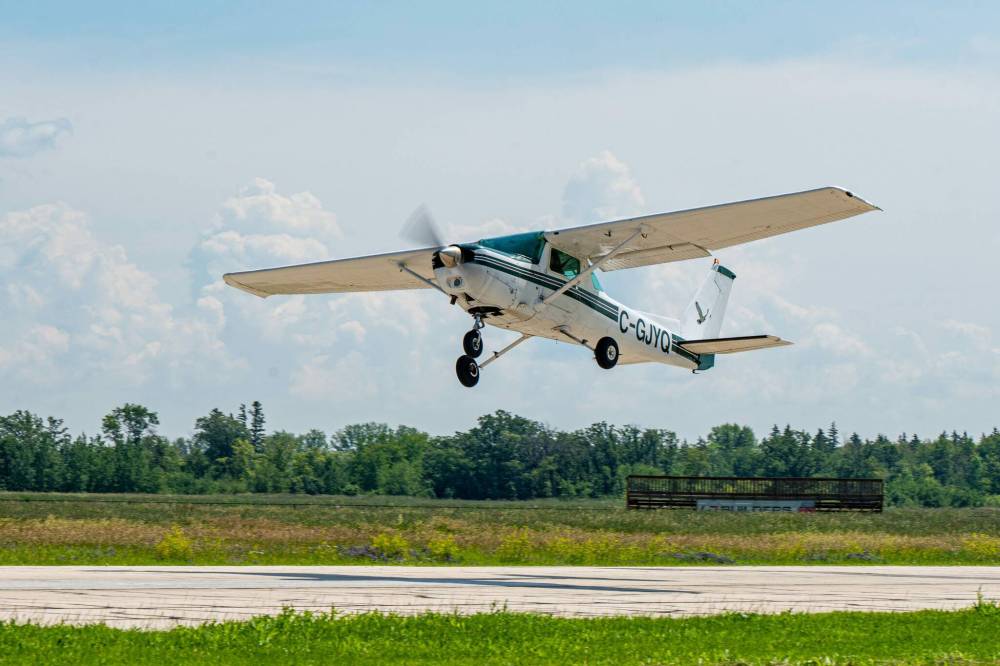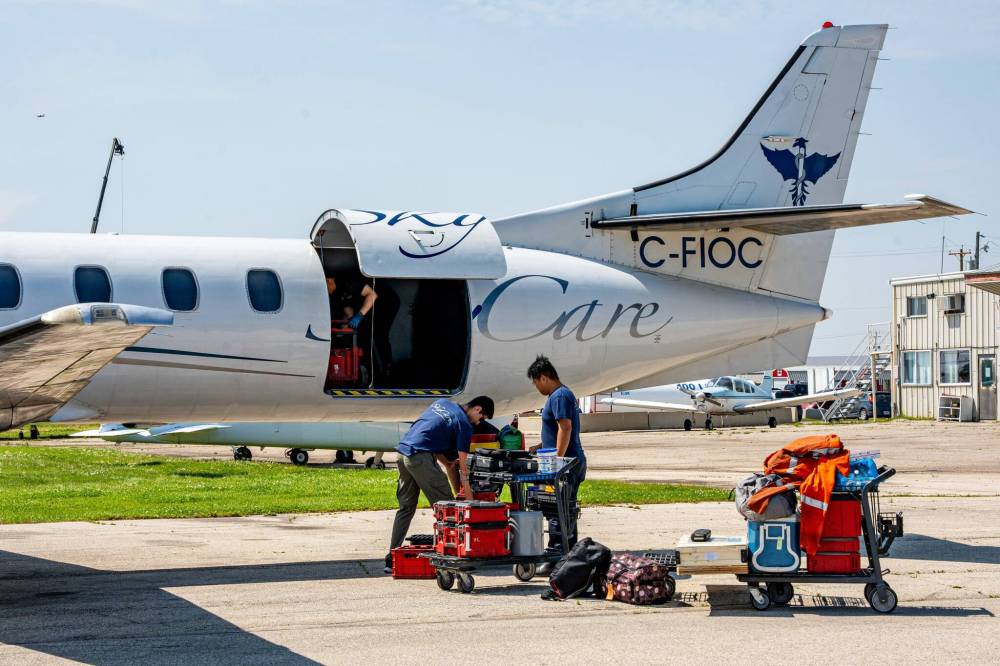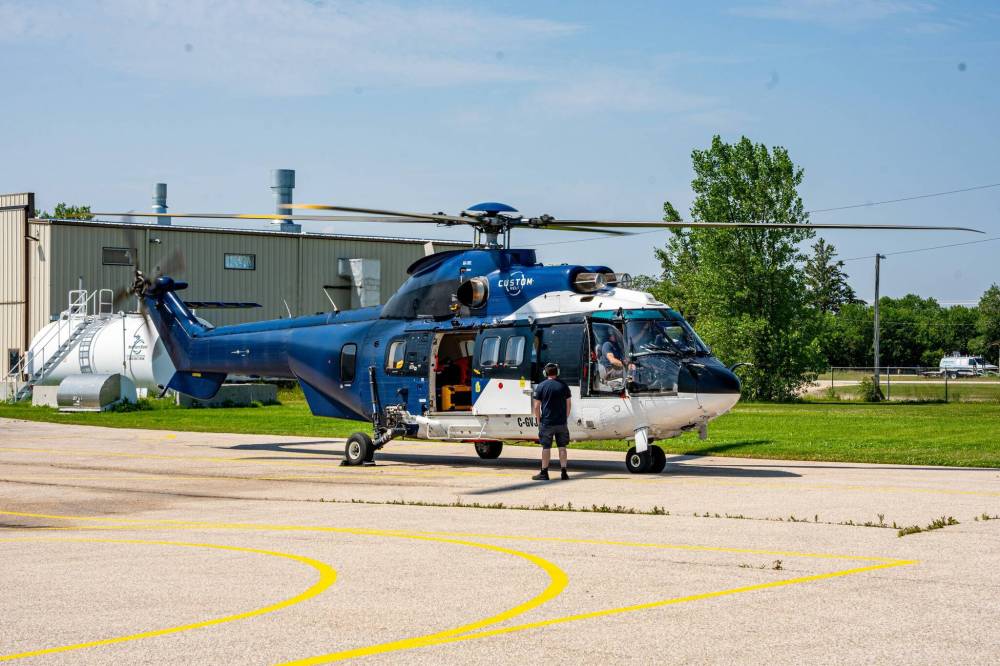Ian Harasymiw and his grandson, Sheamus, share a cold drink as they watch a red-and-white pinstriped Cessna take off from Canada’s 10th busiest airport.
Since taking their spot across from the runway, they’ve seen at least five planes fly in or leave the St. Andrews Airport, just north of Winnipeg, which will mark 60 years in operation Friday.
At any moment, multiple airplanes dot the sky: circling the airport, taking off, landing or taxiing.
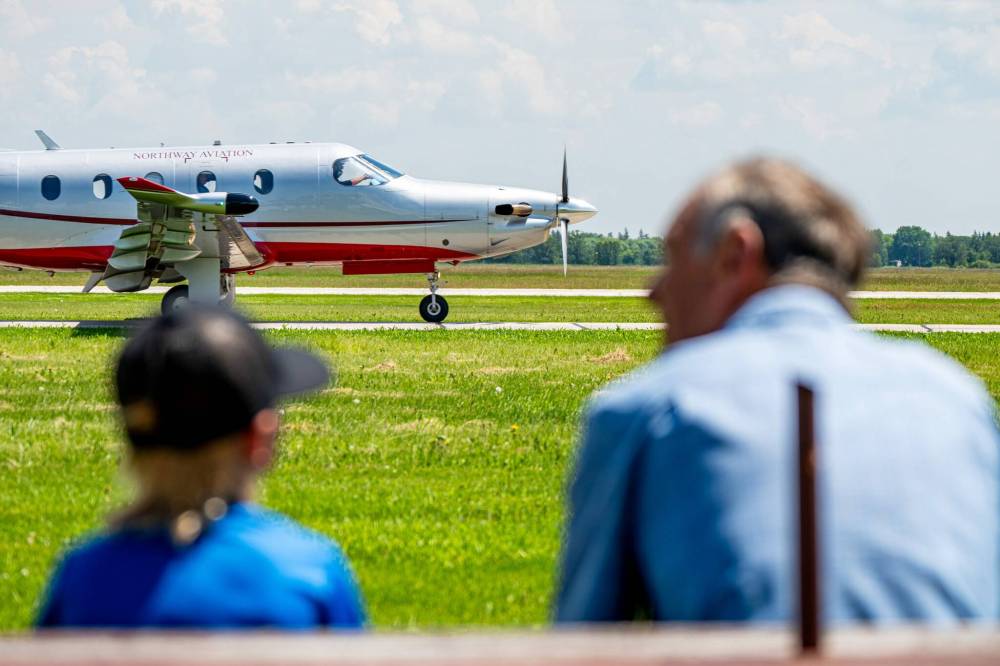
NIC ADAM / FREE PRESS
Ian Harasymiw and his grandson Sheamus watch planes take off at St. Andrews Airport; a frequent pastime for the youngster and his grandparents.
Dale Harasymiw said both she and her husband frequently take their grandson to watch the planes.
“We used to take him and come here when he was only two or three years old. We would spend an hour sitting and he loved it,” said Harasymiw.
St. Andrews ranks as the country’s 10th busiest airport, not for passengers, but for the sheer number of airplane movements, which is 10,000 each month, airport administration says.
Airplane movements account for whenever a plane takes off or lands. Winnipeg’s Richardson International Airport is the 13th busiest in Canada.
Russ Paradoski, chairperson of the airport board, said it’s so busy, despite its small size, because it’s a hub for pilot training, flights to northern communities, and small-prop airplanes that aren’t allowed to fly into the Winnipeg airport.
Paradoski said St. Andrews was built to move pilot training and smaller sized aircraft out of the Winnipeg airport.
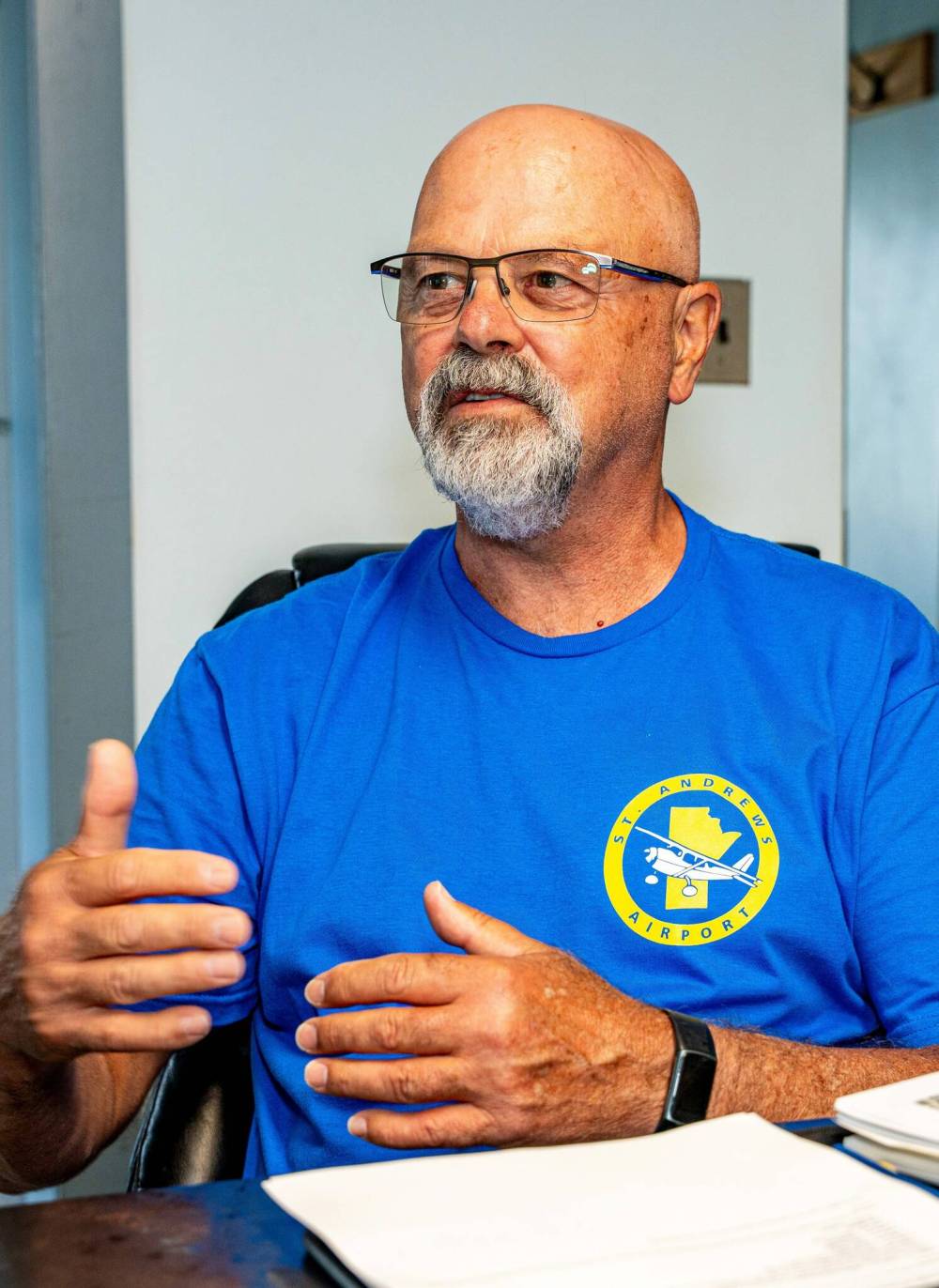
NIC ADAM / FREE PRESS
Russ Paradoski, chairperson of the St. Andrews Airport board, said the airport has become a major contributor to the local economy.
To build the airport, the federal government expropriated farmers’ land and compensated them in the early 1960s. About a dozen families gave up land for the airport. One of those families were Paradoski’s grandparents.
“I’m connected through generations to the airport. I have a stake in this place from my grandma and my grandpa and it has meaning to me in that way. I’m still involved as the grandson making sure their investment is looked after,” Paradoski said.
The Winnipeg Airport Authority managed the airport for Transport Canada until 1999, when the federal government began offloading or closing down smaller, regional airports.
The federal government reached an agreement with the Rural Municipality of St. Andrews to shift ownership of the airport to the R.M, after the airport had a $100-million loss annually, Paradoski said.
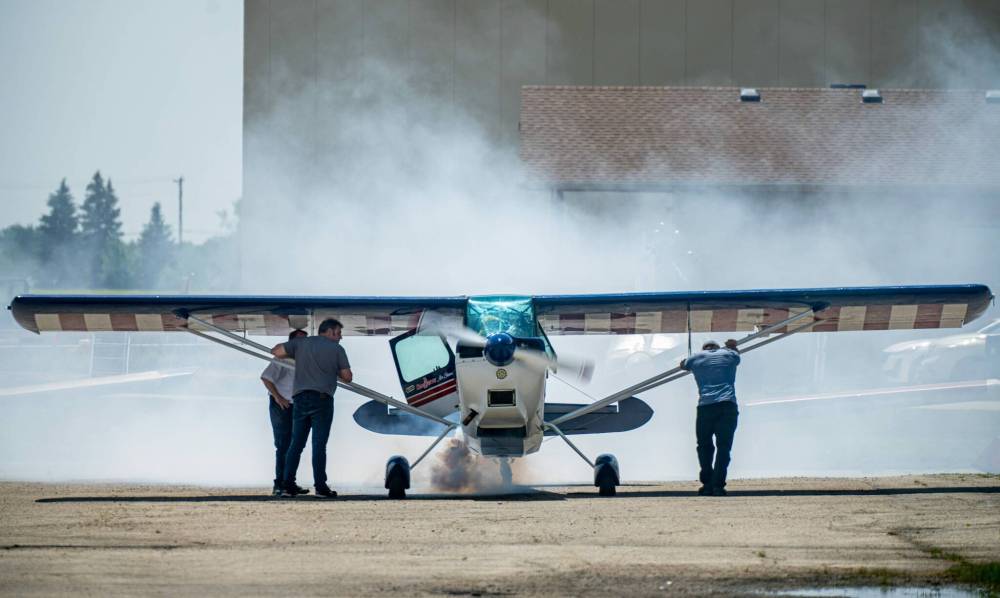
NIC ADAM / FREE PRESS
A plane tests its contrail before taking off from St. Andrews Airport. The airport is celebrating its 60th anniversary this month.
He played an important role as an auditor to restructure the airport when ownership was changed, eventually helping the airport register a $300,000 annual profit. When the R.M. inherited the airport in 1999, there were 45 buildings and hangars. Now, that number has soared to 150 buildings.
The non-profit airport has become the second-biggest contributor to the R.M.’s economy, after the Gerdau Manitoba Steel Mill, Paradoski said.
Paradoski said during the COVID-19 pandemic, the airport was deemed essential because it was a lifeline to northern fly-in communities that would’ve been otherwise isolated.
While the Winnipeg airport suffered nearly $40 million in losses in 2020, as per the Winnipeg Airports Authority, Paradoski said St. Andrews managed to turn a profit because it was an essential service.
In the airport’s maintenance garage, there are lingering signs of Transport Canada’s involvement. Some of the equipment, including a tractor from 1991, still have faded orange paint and Transport Canada stickers. The airport expects to put the profits to use by upgrading old equipment, including replacing the tractor with a new one.
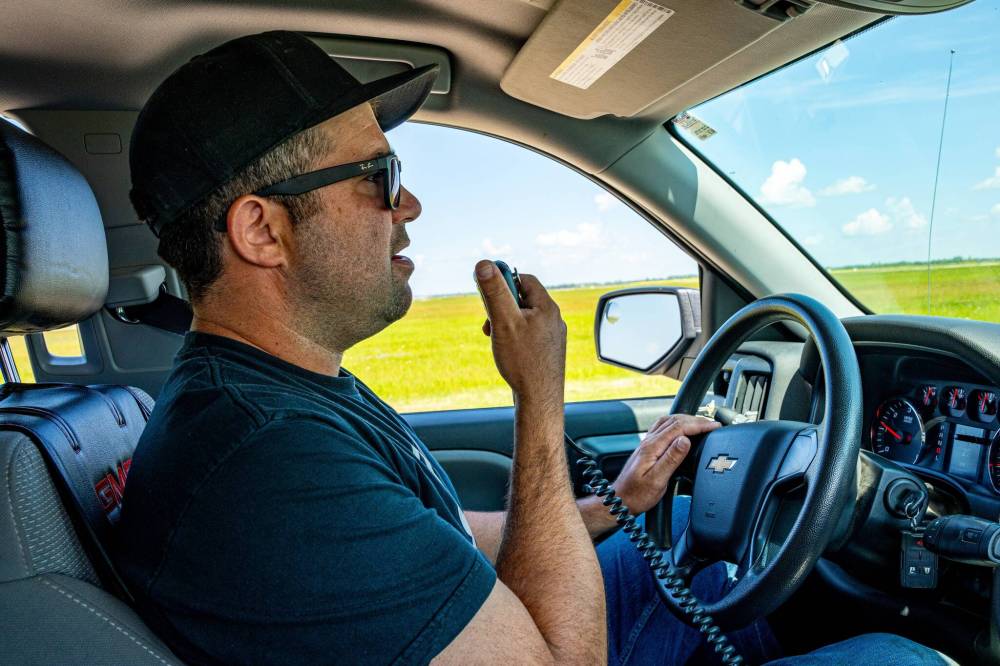
NIC ADAM / FREE PRESS
Kyle Decosse radios the tower before crossing one of the airstrips.
As senior maintenance driver operator for the airport, Decosse maintains runway surfaces, chases away wildlife and responds to any situations that might affect flights.
Kyle Decosse works as senior maintenance driver operator for the airport. His day-to-day job usually involves maintaining the runway surfaces, chasing away wildlife and responding to any situations that might affect flights.
While he’s been on the job, he’s found everything from cellphones, runaway dogs, door handles and gas caps on the tarmac.
“No one usually calls to say ‘did you find the gas cap?’ because I believe they (pilots) can get in trouble if those are being found,” Decosse said.
While the airport has three runways, only two are operational. Decosse said the abandoned runway is still well used. It’s ideal for movie stunt driving, car clubs and police vehicle training.
One of the main reasons the airport is profitable is because it’s used by 75 companies.
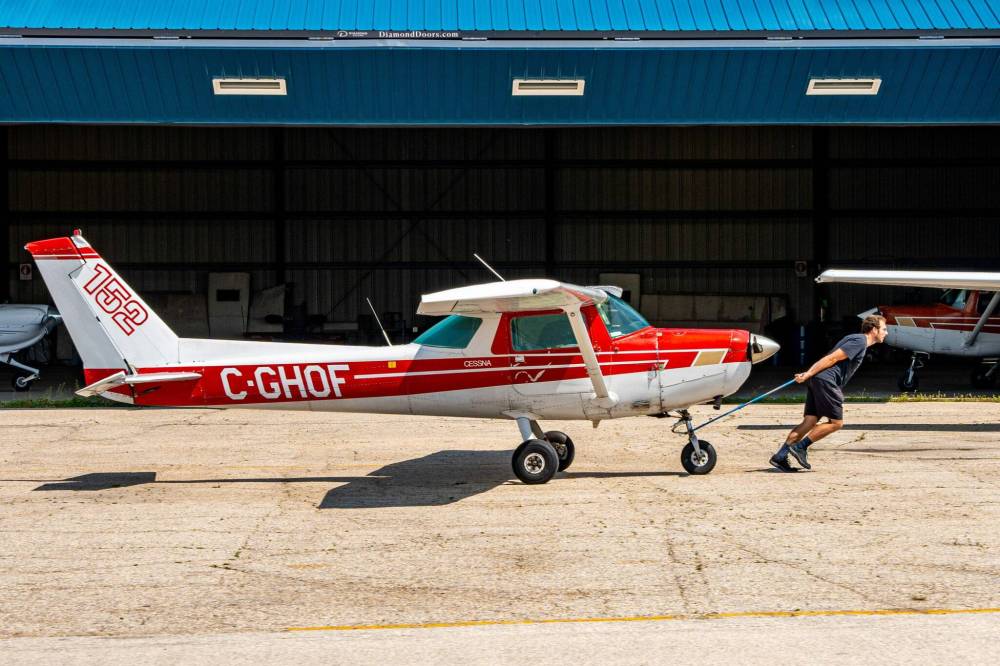
NIC ADAM / FREE PRESS
Harv’s Air dispatcher and commercial pilot student Kevin Hladik taxis a small Cessna plane at St. Andrews Airport on Monday morning. Harv’s Air is one of 75 companies that use the airport.
Harv’s Air has operated since 1973 and is one of two major flight schools based at St. Andrews. The company has 15 aircraft at the airport, and operates as many as 80 flights per day.
Will Duffin, a flight student and Harv’s Air employee, said he was born into flying, after his parents took him on his first flight when he was 12 days old. He hopes to complete his commercial pilot licence by December.
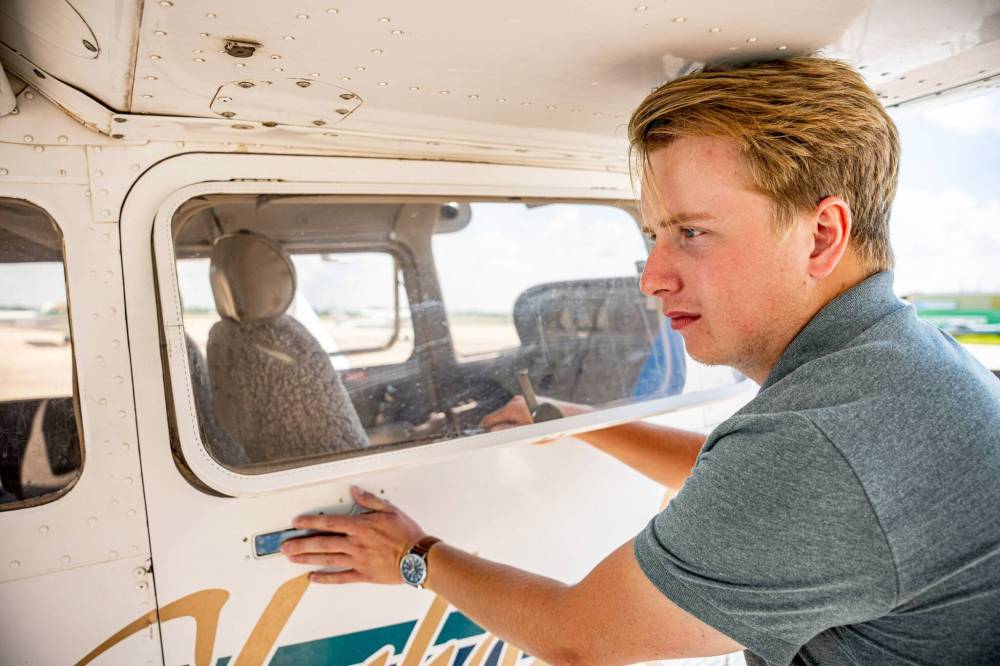
NIC ADAM / FREE PRESS
Seeing Manitoba from the air never gets old for Will Duffin, a flight student and Harv’s Air employee.
Whenever he flies, the sight of Manitoba from the air never gets old for Duffin.
“You can see for miles. You see all the fields, especially when they’re harvesting in the fall. You see the combine harvesters and all their trails of dust. I think that’s pretty cool,” he said.
He said he’s been working toward his licence for the last 18 months. Duffin tries to get up in the air every other day.
The airport will bring in four Second World War aircraft used to train Royal Canadian Air Force pilots, during the anniversary celebration Friday. Flight tickets will be available for purchase, ranging between $280 and $400. The airport will also provide live music and a barbecue.
matthew.frank@freepress.mb.ca
